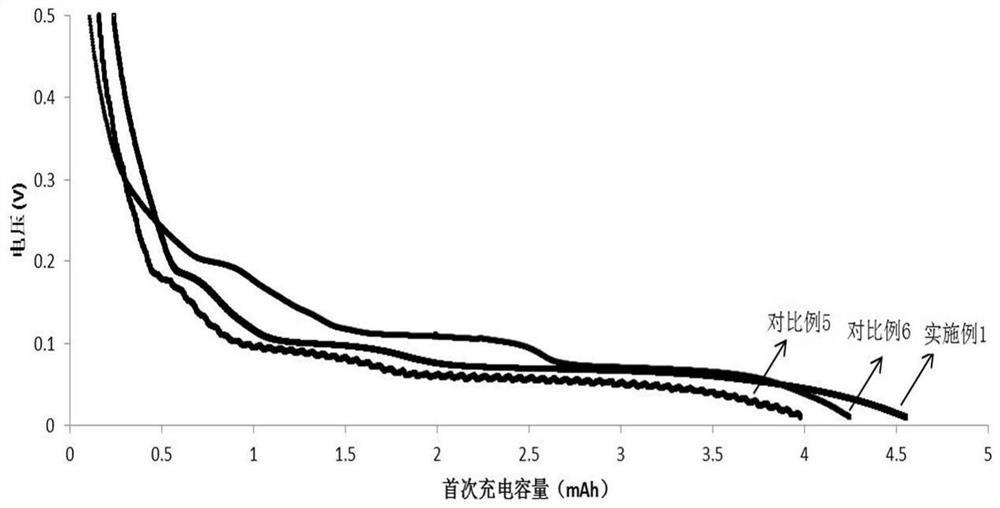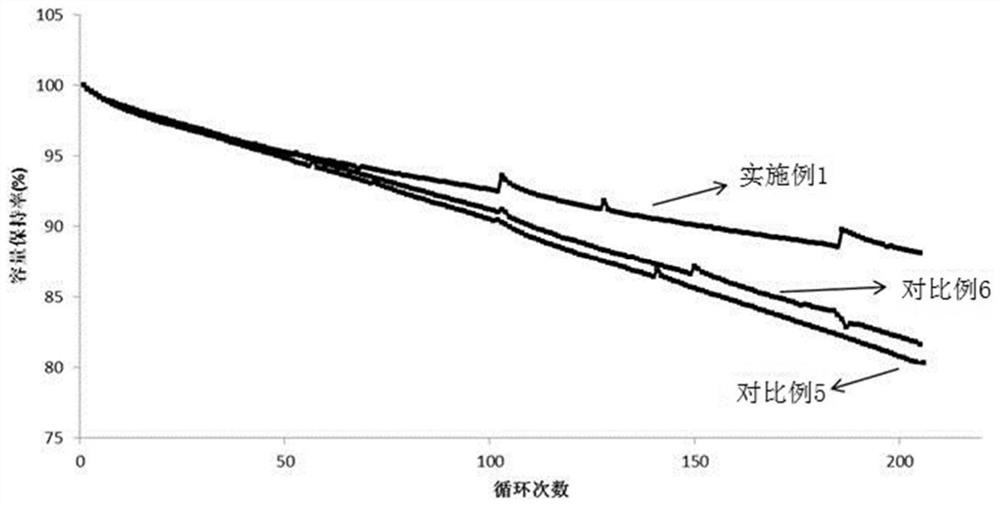Porous carbon material added into silicon-based negative electrode, silicon-based negative electrode and lithium ion battery
A porous carbon material and silicon-based negative electrode technology, applied in the direction of negative electrodes, battery electrodes, secondary batteries, etc., can solve the problems of high cost and difficulty in the application of advanced porous graphite materials, so as to improve cycle life, improve cycle performance, Effect of suppressing capacity fading
- Summary
- Abstract
- Description
- Claims
- Application Information
AI Technical Summary
Problems solved by technology
Method used
Image
Examples
Embodiment 1
[0033] A porous carbon material added to a silicon-based negative electrode, prepared from coffee grounds, the specific preparation process is as follows:
[0034] (1) Put the waste coffee grounds collected from coffee shops and coffee companies in water and stir them into a suspension overnight. The mass ratio of coffee grounds and water is 1:1. The suspension is purified by freeze-drying at -80°C for 3 days After the coffee grounds powder;
[0035] (2) heating the coffee grounds powder in step (1) at 900° C. for 60 minutes in an argon atmosphere to obtain a hard carbon material;
[0036] (3) Grinding the hard carbon material in a ball mill for several times until the average particle size is 10 μm, the mass ratio of spherical carbon is 1:25, and the interval between each grinding is 10 minutes to obtain a refined powder;
[0037] (4) Pre-carbonize the refined powder at 400°C for 6 hours under an argon atmosphere to obtain a carbonized material;
[0038] (5) Grind the carbo...
Embodiment 2
[0043] A porous carbon material added to a silicon-based negative electrode, prepared from coffee grounds, the specific preparation process is as follows:
[0044](1) The waste coffee grounds collected from coffee shops and coffee companies were placed in water and stirred into a suspension overnight, the mass ratio of coffee grounds and water was 1:2, and then the suspension was freeze-dried at -70°C for 5 days, Obtain purified coffee grounds powder;
[0045] (2) heating the coffee grounds powder in step (1) at 1000° C. for 40 minutes under an argon atmosphere to perform high-temperature oxygen barrier hardening treatment to obtain a hard carbon material;
[0046] (3) Grinding the hard carbon material in a ball mill for several times until the average particle size is 5 μm, the mass ratio of spherical carbon is 1:25, and the interval between each grinding is 5 minutes to obtain a refined powder;
[0047] (4) Pre-carbonize the fine powder at 500°C for 3 hours under an argon a...
Embodiment 3
[0053] A porous carbon material added to a silicon-based negative electrode, prepared from coffee grounds, the specific preparation process is as follows:
[0054] (1) Put the waste coffee grounds collected from coffee shops and coffee companies in water and stir them into a suspension overnight. The mass ratio of coffee grounds and water is 1:2, and then freeze-dry the suspension at -90°C for 3 days. Obtain purified coffee grounds powder;
[0055] (2) heating the coffee grounds powder in step (1) at 9500° C. for 50 minutes under an argon atmosphere to carry out high-temperature oxygen barrier hardening treatment to obtain a hard carbon material;
[0056] (3) Grinding the hard carbon material in a ball mill for several times until the average particle size is 20 μm, the mass ratio of spherical carbon is 1:25, and the interval between each grinding is 8 minutes to obtain a refined powder;
[0057] (4) Pre-carbonize the refined powder at 450°C for 4 hours under an argon atmosph...
PUM
| Property | Measurement | Unit |
|---|---|---|
| particle diameter | aaaaa | aaaaa |
| thickness | aaaaa | aaaaa |
| thickness | aaaaa | aaaaa |
Abstract
Description
Claims
Application Information
 Login to View More
Login to View More - R&D
- Intellectual Property
- Life Sciences
- Materials
- Tech Scout
- Unparalleled Data Quality
- Higher Quality Content
- 60% Fewer Hallucinations
Browse by: Latest US Patents, China's latest patents, Technical Efficacy Thesaurus, Application Domain, Technology Topic, Popular Technical Reports.
© 2025 PatSnap. All rights reserved.Legal|Privacy policy|Modern Slavery Act Transparency Statement|Sitemap|About US| Contact US: help@patsnap.com



